
Science Objectives
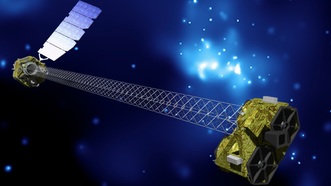
The two-year primary mission of NuSTAR is divided into four parts that focus one one particular element that the Spacecraft studies. These portions of the mission are: studying the evolution of of massive black holes though surveys carried out in fields with excellent multi-wavelength coverage, understanding the population of compact objects and the nature of the black hole in the middle of the Milky Way Galaxy, constraining explosion dynamics and nucleosynthesis in supernovae, and examining the nature of particle acceleration in relativistic jets. Several other observations will be made during the primary mission and a guest observer program will start in a possible extended mission of NuSTAR.
1. Black Holes
NuSTAR will conduct an extensive survey of Black Holes of different sizes and at various locations in space mapping high-energy X-Rays that these phenomena radiate into space. Black Holes are the ultimate end state of matter. When massive stars explode as supernovae, their core collapses into a sphere that is much smaller than the original star – increasing its gravity at the surface turning the object into a white dwarf and, when the original star was bigger than 3 solar masses, a black hole which has a gravitational pull that light can not escape – making the object appear as a black area in visible studies.
However, a large amount of radiation can be emitted from an area right outside their effective surfaces. These are known as event horizons. As particles and matter fall towards black holes, a swirling disk is produced. Forces like friction between accelerated particles heat this disk up to millions of degrees which produces significant X-Ray emissions. These X-Rays are the only indicators for otherwise invisible black holes – giving away their locations which can not be pin-pointed in any other way. By analyzing the radiation, scientists can calculate the mass of a black hole to learn more about their physical properties. Black holes are known to have at least several solar masses, but there are monsters with a mass of millions or billions of times that of the Sun. In the center of the Milky Way, there is a Black Hole of about 4 Million Solar Masses. Visible light is obscured while X-Rays can shine through.
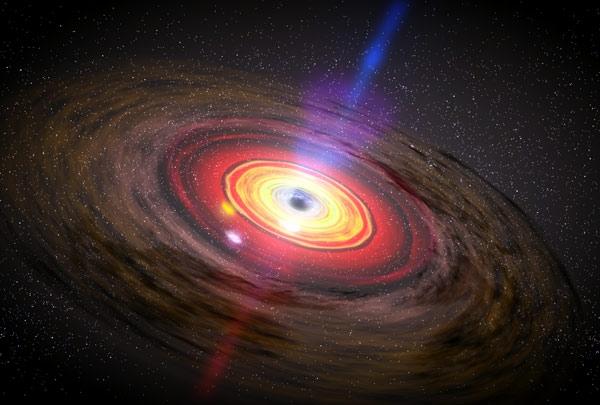
One of NuSTAR’s goals is to look for Black Holes of all mass ranges. Several months of the mission will be spent looking for Black Holes within our Galaxy and in the distant Universe – mapping their properties and locations. The Mission will study regions of the sky where many previous missions have already examined other spectral ranges of light, so that scientists can get a full picture of emitted radiation to improve understanding of the universe. Peering into the Milky Way, NuSTAR will find more X-Ray Sources and identify their nature. It will also have another look at the ‘monster in the middle’.
2. Supernovae
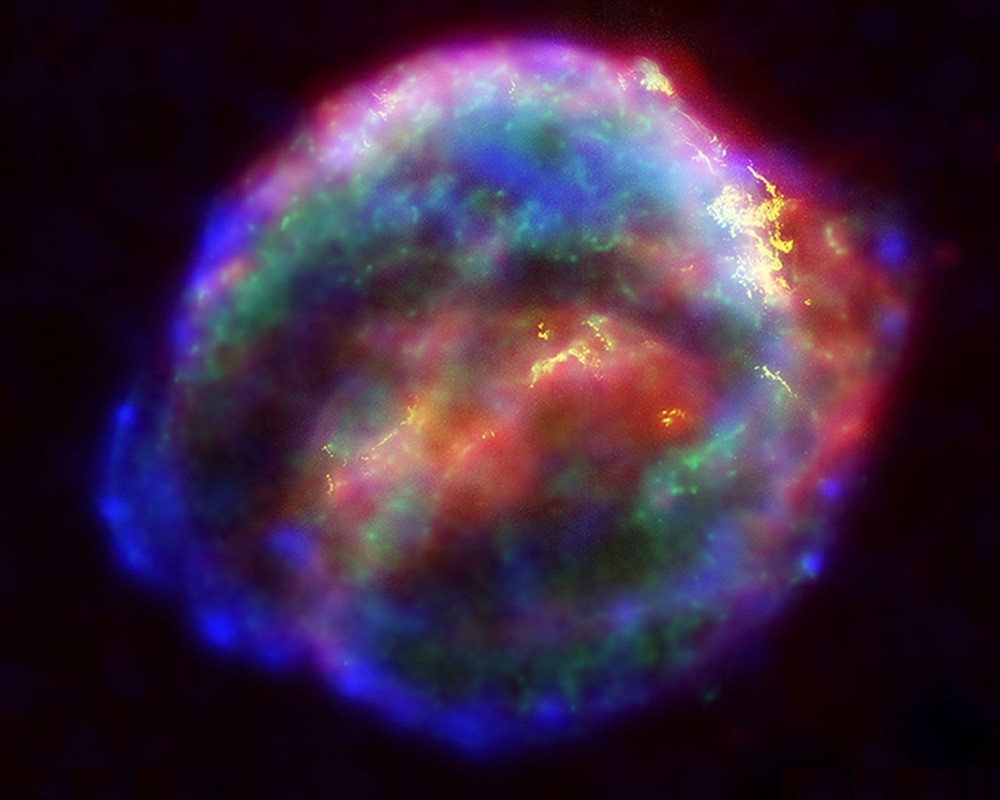
Supernovae are a crucial part of the cycle of life and death that keeps the Universe going. Star Formation and Evolution ends in Novae or Supernovae depending on the size of the star. These two objects eject large amounts of matter into space which is then becoming a part of new stars as they form. The unstable balance that exists between gravitational and nuclear forces fuels the cycle in which the death of stars leads to the birth of new ones.
NuSTAR will examine this life cycle and improve our understanding of it by studying supernova and supernovae remnants and their respective X-Ray profiles. Observing supernovae will provide a deep look inside the core of dying stars and provide astrophysical laboratories for studying nuclear physics in the extreme conditions of space that can not be replicated on Earth. Supernova remnants are the results of supernovae and are believed to be essential in the chemical evolution of galaxies by generating new stars. High-Energy Radiation can function as a tracer for this cycle of generation and NuSTAR will study the radioactive nuclei that are emitted in these explosions. Nuclear decays can provide further insight the chemical constituents that are present in supernovae. Information on their quantities and the conditions under which they are produced. Studying this radiation will enable scientists to obtain data about the underlying nuclear ignition, structure and dynamics of these events.
Supernova remnants also shape the evolution of galaxies as they eject matter into surrounding space which sweeps up other materials into shocks that cause the next generation of star formation events. These shocks contain substantial amounts of energy that power the acceleration of cosmic-ray particles. NuSTAR will study these events by means of X-Ray emissions to locate the sites of particle acceleration. The mission will provide a never before seen accuracy in spectroscopy to study these processes.
3. Relativistic Jets
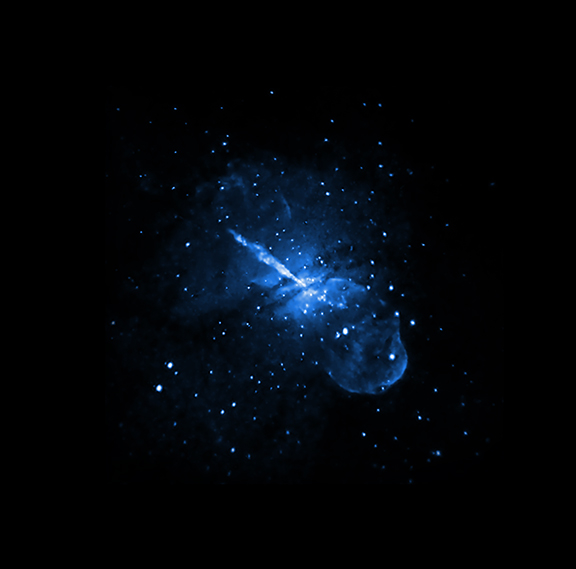
Massive Black Holes are present in many galaxies including our own. Throughout a large portion of cosmic history, these Black Holes are building the center of a system with their surrounding material circling the Hole in stable orbits. But there are certain episodes of increased activity. During these periods, surrounding gas is perturbed and accretes onto the Black Holes. This causes significant releases of energy that is emitted in the form of radiation over the entire electromagnetic spectrum. Accreting Black Holes will be the most intense objects that NuSTAR will ‘see’ in its sky mappings. NuSTAR will locate accreting supermassive Black Holes from billion light-years away and studying the processes that cause these immense ejections of energy.
The Mission seeks to obtain a cosmic census of galactic activity and to understand the physical processes of the extreme environment near the accreting black holes that cause intense radiation.
Another Space Phenomenon NuSTAR will study are so called blazars. Accretion in Black Holes takes place in a disk-like structure that is circling the Black Hole associated with relativistic jets aligned with the rotation axis of the disk. These jets contain particles moving at very high speeds. Jets pointing directly at an object cause relativistic effects like Doppler Boosting making it look even more luminous. NuSTAR will have a close look at blazars to better understand relativistic jets coming from supermassive Black Holes. For that, The Spacecraft is equipped with unprecedented sensitivity allowing NuSTAR to look at the high energy portion of the electromagnetic spectrum.
As blazers show a varying intensity and appear to be changing between their active accreding state and a quiescent state. NuSTAR will be able to examine blazars in both states. Understanding the time scale of this variability will give clues that could enable scientists to deduce the physical structure of disks and jets. NuSTAR will probe targets in X-Ray while other observatories, both space- and ground-based, study the same objects in radio wavelengths and visible light.
Ultimately, the Mission will lead to a better understanding of the role magnetic fields play in accretion disks, the structure and physical composition of relativistic jets and the energetic emission coming from blazars.
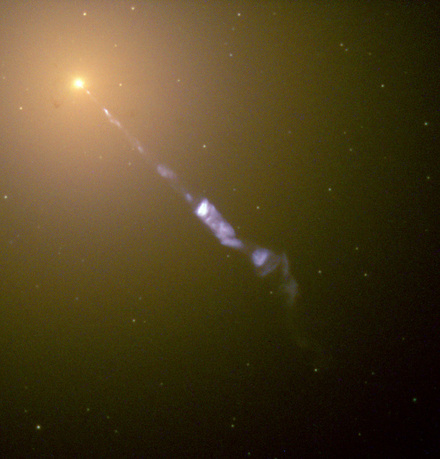
4. The Milky Way Galaxy
With its high-sensitivity Instrument Suite, NuStar will conduct an extensive study of our galaxy, the Milky Way.
In particular, NuSTAR will examine the Galactic Center in high-energy X-Ray that can pass through gas undiminished – unlike low-energy radiation. The center of our galaxy contains around 1% of the entire Galaxy’s stellar mass and 10% of its most massive, young stars. As mentioned before, in the middle of the Milky Way is a massive Black Hole of 4 Million (!) Solar Masses. Named Sagittarius A*, it has become one of the most studied objects that has raised many questions in the field of science. Despite its huge mass, it is the most under-luminous supermassive Black Hole that is currently known. Previous studies were limited to observations of stars orbiting the Black Hole to understand the effects it has on other objects. NuSTAR will observe flares of Sgr A*that originate from instabilities occurring in the inflow of matter into the Black Hole to provide a more advanced picture of this inflow. High energy emissions from the vicinity of Sgr A* have been observed by other missions and are not fully understood by scientists. NuSTAR will provide more information on high-energy radiation coming from that location in our galaxy. Also, the mission is expected to identify a large number of new objects in the center of the Milky Way that were not found before.
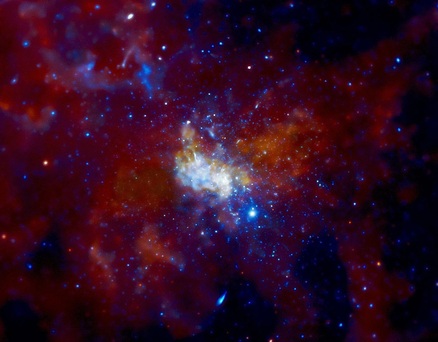
Magnetars are objects that will also be studied by NuSTAR. Magnetars are rare, young, isolated, ultra-magnetized neutron stars that are believed to be driven by forces acting in their interior and originating from their intense-magnetic fields. These field are the strongest that have ever been discovered in the universe. Magnetic activity in magnetars can show variability on time scales of milliseconds to years that is caused by stresses inside the neutron stars. Details about the physics and origin of Magnetars are not known yet and astronomers have been surprised many times by new discoveries associated with these phenomena. In hard X-Ray, Magnetars are very luminous objects. The source of this energy is unknown, however there are several models explaining the emissions. NuSTAR monitors soft and hard X-Ray bands to find a correlating emission mechanisms that are proposed in some models. In the second part of its study of Magnetars, the Spacecraft will measure all known Mangetars in high-energy X-Ray, obtaining precise spectra of these objects.
NuSTAR will be important for the study of pulsars and Pulsar Wind Nebulae that are powered by Pulsars which are neutron stars that are relatively young and rapidly rotating as their rotation and magnetic axes are misaligned.
These object are capable of producing powerful matter/anti-matter winds. Understanding this wind and its interactions with surrounding materials that generates Nebulae has become a priority in astrophysics. NuSTAR will study the appearance of many Pulsar Wind Nebulae in high X-Ray Band which has never been done before. Also, accurate spectra of these Nebulae will be acquired to understand the properties of the relativistic winds. Providing information on high-energy Gamma-Ray emissions in Pulsar Winds are a part of NuSTAR’s Mission as well.
5. The Sun
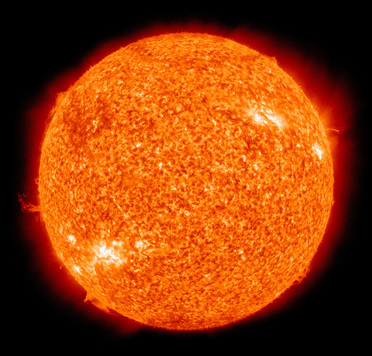
The Sun will be the closest Object that NuSTAR will study. During the Mission, high energy observations of the Sun itself and its Corona will be made. The Corona is the area around the Sun that reaches up to a million degrees and reaches millions of kilometers into space. Solar Phenomena like loops, flares, prominences and coronal mass ejections are associated with particle acceleration processes taking place in the Corona. These are similar to those taking place in supernovae remnants, Black Holes and high temperature astrophysical plasmas.
NuSTAR will provide a high resolutions of these events giving basic information on those taking place in deep space. Even small flares can be studied by NuSTAR that can not be seen by other Solar Observatories, but appear to have a significant effect on the Corona and its thermal regulation. X-Rays emitted by by beams of high-energy particles that are ejected during flares. Also, NuSTAR will seek to prove the axion theory by identifying converted axion particles in the form of X-Ray Particles providing ground breaking information that could help solve the dark matter problem.
6. Other Science
Additional Observations during the 2-year primary mission include the study of high-energy emission from galaxy clusters, energy emissions from star-forming galaxies and flares from stars other than the Sun. For budget reasons, NuSTAR will not have a Guest Observer Program during its primary mission. In a possible extended mission scenario – pending continuing health of the spacecraft, a Guest Observer Program could be initiated to make the unprecedented sensitivity of NuSTAR’s Instruments available to the astrophysical community.
